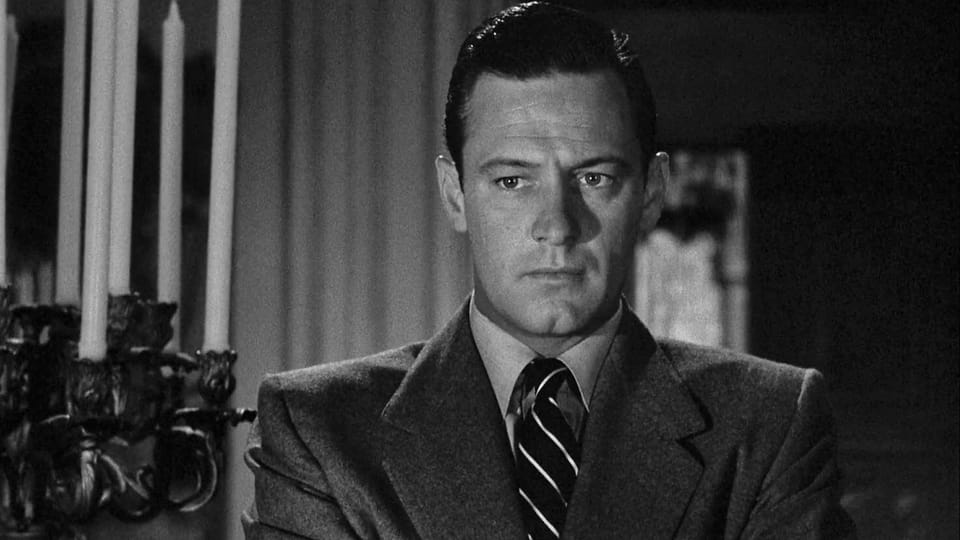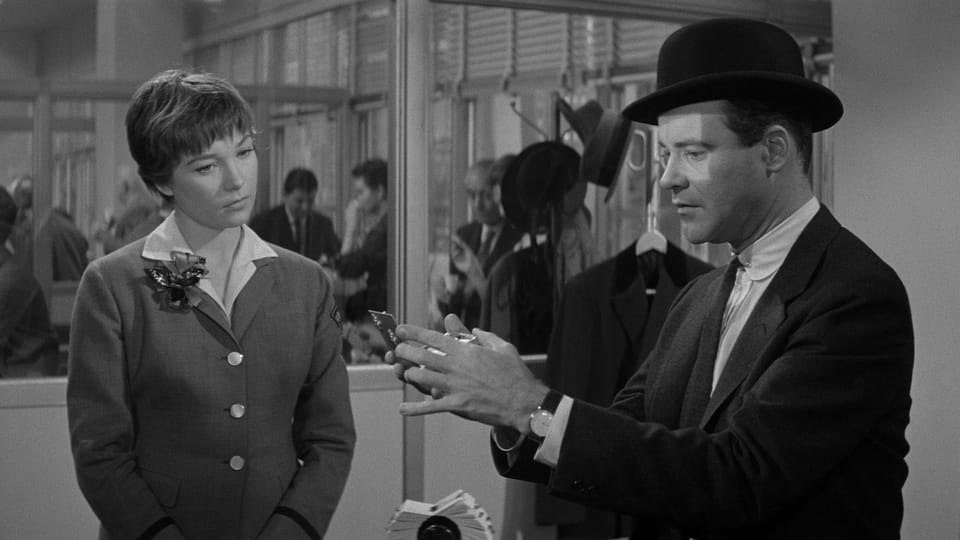When creative priorities collide in action lines.
I have three priorities for my action lines, which are ranked in a hierarchy.

The Story and Plot Weekly Email is published every Tuesday morning. Don't miss another one.
I have a guideline of “Do not interrupt your own scene.”
This generally means focus on what the scene and the moment are really about.
In more specific terms, and in the context of this email, it means do not add unnecessary action lines, especially in between dialogue, or unnecessary parentheticals.
Find the flow of the scene.
Keep the reader’s eyes moving DOWN the page.
This dilemma and a flurry of choices arose as I rewrote an old scene I had written over 20 years ago.
Here is the old scene:
If you read last week’s email, you will remember that this is essentially an amnesia story.
This scene is a big reveal as Keenum learns that in this large gap of lost time, he apparently got into business with some bad people. In essence, he is learning that he was a corrupt cop.
It’s a gut-wrenching moment for him.
I like the simplicity of the scene.
You likely could not write such an earth-shattering moment this way earlier in the screenplay. You would probably have to sell the emotion more.
But as a late reveal, coming on page 90, just before the third act, the audience (the reader) should already be emotionally invested enough that they have their own reaction to this news.
Keeping it simple allows the emotion to happen, and keeps things moving.
But now I want to add an extra beat to the scene.
I want to add the information on how Keenum was able to pay off his house. So, Robbins is going to add that Keenum sold a bit of equity, and this will close an open loop in the story.
But in doing so, I will disrupt the rhythm and need to make even more adjustments. And as we all know, once you open up a scene to rewrites, you start to fiddle.
And fiddle.
And fiddle.
I ended up spending a couple of hours just adding one extra beat to the scene.
Why all the effort?
I consider maximizing the quality of the read one of my essential jobs.
When someone reads my screenplay, I want them to feel like they have experienced the movie.
You’ll never really do it, just like you’ll never really make it perfect. But it’s worth trying, and I want to get as close as possible.
A lot goes into this effort, and it’s a hundred different things, but a big part of it is how quickly the reader turns the page.
I want eyes going DOWN the page far more than they are going left to right.
This is what we mean by writing “vertically.” This emphasis also allows us to use the cinematic language to our advantage.
We do this for the reader’s experience
I want the reader to associate my screenplay with “a good read.”
The more positive their experience reading the script, the more I can get them to focus on their emotional experience of the story.
We do it to earn the reader’s trust.
I don’t have to worry about this aspect if it’s a friend or a producer I know reading my screenplay. They already trust me, and they will give me the benefit of the doubt.
But it’s eventually going to get to someone who doesn’t know me, and I will have to earn their trust.
This may be another producer, a buyer, a director, or an actor.
With each new person, I need to win that trust again, and that comes from the attention to detail I put into elevating their experience.
Not everyone needs to worry about this.
If you’re rewriting a scene that will be shot the next day, the only thing that matters is what goes on screen.
If you’re a seven-figure A-list writer, you can count on the reader’s attention. If the studio has invested heavily in you, you can bet they’re not skimming.
This is why I am not a massive fan of using A-list screenplays exclusively for your education. We also need to read screenplays that sell on spec from less-well-known writers.
It’s a matter of attention.
Most of us overwrite.
This is normal, and we can always scale back. There is an old line that I was initially told (incorrectly) was from Mark Twain, “I would have made it shorter, but I didn’t have enough time.”
The key is to make the effort to scale it back and not just settle.
The principle is the same for —
Taking the reader’s attention for granted.
Don’t. Help them out as much as possible. Assume yours is the fifth screenplay they’re reading that day, and they want to call it quits.
Do everything you can to help them have a good experience. Don’t put the onus on them.
“Just be compelling” is not helpful advice.
And it’s honestly a little dismissive for my taste.
It’s like going to a batting coach and their only guidance is, “hit a home run.”
We all want to be more compelling. The question is HOW do we do that?
While some things will factor in larger than others, all the little things add up as well.
It’s why I fight over every last word.
The rewrite.
First, I want to review my priorities when it comes to action lines. This is the criteria for how I make decisions, and in the order of their importance.
- Clarity of intent.
- The emotion I am trying to evoke.
- The ease of the read.
So I rewrote the scene.
And while I did my fiddling, I ended up in a similar place for the first 60% of it.
Now, for some reason, I will randomly capitalize words (”A Children’s park.”). I don’t understand why, and I noticed a few other writers have this same weird tic. I don’t get it, but it’s fixed.
I also reduced “OFFICER ROBBINS” to “ROBBINS” because the former was annoying, and I have no idea what I was thinking when I wrote it.
I simplified the line about the siblings. The earlier version was redundant, but I also liked the rhythm of it. I may switch back. No one on the planet will notice either way.
I changed the last line there from “Holy shit” to “Keenum absorbs that.”
This is where the priorities direct my choices.
First priority is 1. Clarity of intent.
I wanted to make sure it was clear that the line was dealing with Keenum’s reaction rather than mine or the audience’s commentary on the moment.
This is where the cinematic language comes in. Every time a character speaks, unless there is an “O.S.”, the reader will tend to imagine that character’s face on the screen.
So, writing “Keenum absorbs that” gives me the best shot to get the reader's mind off Robbin's face and onto Keenum's.
Normally, I would not interrupt dialogue this much.
But it’s Keenum’s scene. With Robbins having most of the dialogue, I am going to have to make a point to keep Keenum’s face in the reader’s mind as much as possible.
His reaction is what is important here.
Remember, “2. The emotion I am trying to evoke” is a higher priority than “3. The ease of the read.”
I am really fighting to keep the emphasis on Keenum. I don’t mention him by name in that last line, but I set up the visual dynamic in the previous action line.
I tried a lot of different variations of “What. The. Fuck.” to really sell what a punch in the gut this is (including using that phrase), and this is what I settled on for now.
Again, Robbins is talking, but the scene is about Keenum’s emotional reaction to this information, so I am pulling the reader’s attention to that.
The clarity and the emotion are more important than the ease of the read here. Not that the read is difficult or anything, but I don't want to take any chances.
There is a version of this where you could just as easily write, "We stay on Keenum as he listens," or something like that. That's a little overt for my taste, but it would be perfectly fine.
“The irony is thick” line is perhaps unnecessary, but again, my biggest priority of all is “1. Clarity of intent.”
Most well-written lines will not require explanation, but irony and sarcasm always deserve a second look.
So I am leaning into clarity here for safety's sake.
The intent of the last three lines is to give a sense of lingering on Keenum and the depth of his shame. Usually, I use this kind of hyperbole more for fun, but I don’t mind it here.
It’s a HUGE moment in the story, and it’s worth the extra space.
The lesson here is not the writing.
I understand that any time you share actual writing, you open yourself up to judgment. You may or may not like what I wrote here.
That’s fine.
And I am not looking for notes either.
This is a lesson on intentionality.
What I am sharing here is how each line has an intention. It’s there for a reason, and how it’s presented has a purpose as well.
The intentions will often come into conflict, and you have to choose your priorities. For me, it’s:
- Clarity of intent.
- The emotion I am trying to evoke.
- The ease of the read.
In that order.
You could do far worse than to adopt the same.
Most of the benefit for the reader will be imperceptible.
They will just feel it.
They won't notice how you controlled the image in their mind. They won’t celebrate all the small choices you make to improve their experience.
But the improvemnet will be there, and the full impact mostly as a cumulative effect. Most importantly, it will allow them to more easily feel the emotion of your piece.
But always remember, a better read can't make a bad story good.
But it can make a great story easier to identify.
And that's the goal.
The Story and Plot Weekly Email is published every Tuesday morning. Don't miss another one.
When you're ready, these are ways I can help you:
WORK WITH ME 1:1
1-on-1 Coaching | Screenplay Consultation
TAKE A COURSE
Mastering Structure | Idea To Outline




